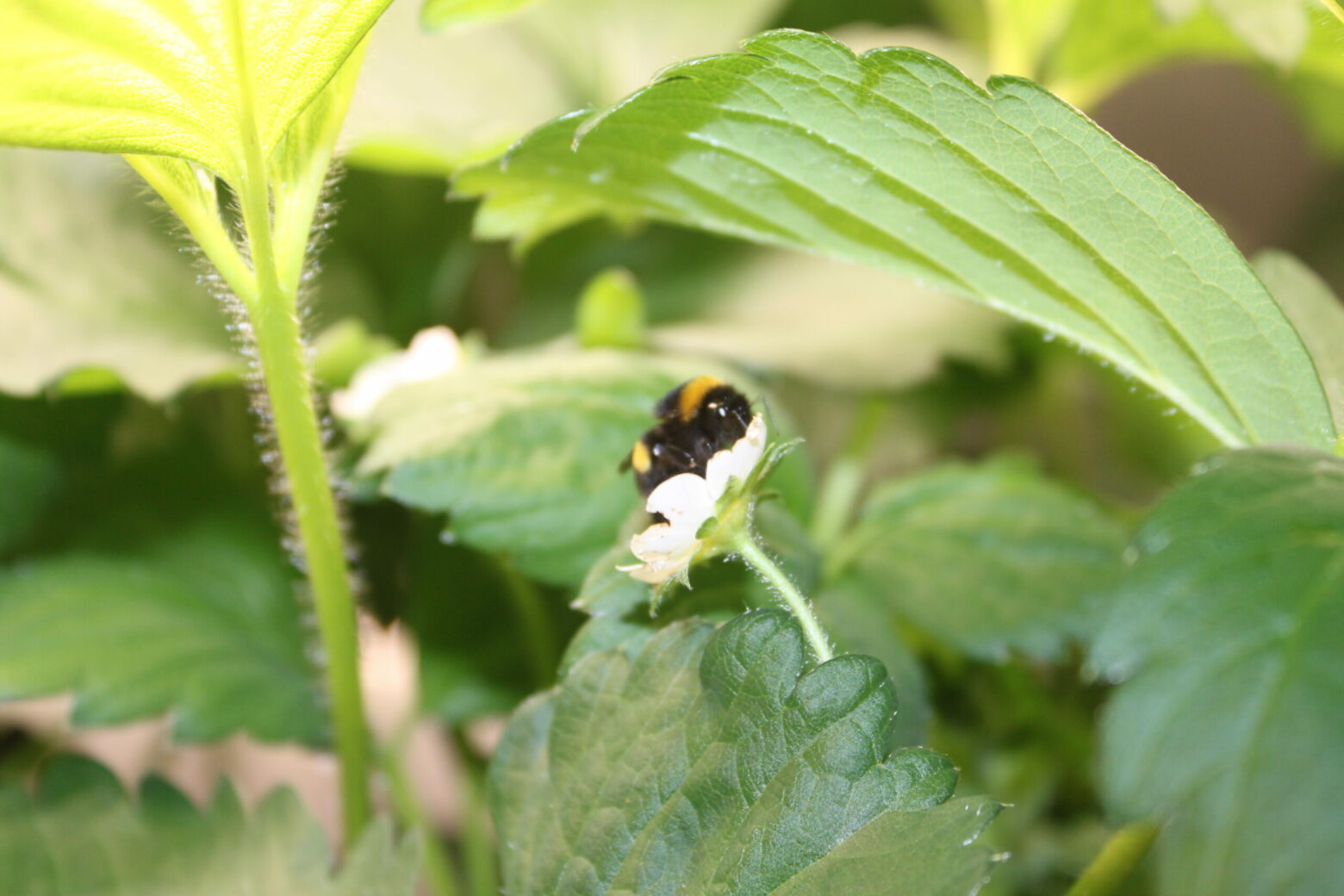In 2018 Kroptek and Berry Gardens embarked on a joint project to convert a refrigerated shipping container into an indoor strawberry growing unit. Berry Gardens chose Kroptek as their partner in this venture due to the team’s knowledge of indoor growing environments, combined with Kroptek’s agility in producing customised solutions and dedication to hands-on support.
Berry Gardens is a co-operative of British berry growers and the UK’s largest supplier of the nation’s berries and cherries. Founded over 49 years ago initially supplying British fruit during the short summer period, they have now grown into a dynamic year-round business supplying most retailers, foodservice and wholesalers with award-winning fruit. Berry Gardens has an extensive R&D programme in terms of new technologies involved in the production, varietal research as well as environmentally responsible farming and non-pesticidal treatments of pests and disease.
The project’s objective was to research and develop methods of growing strawberries indoors given a set of organoleptic, technical and commercial targets.
“Berry Gardens aims to be responsible long-term custodians of our environment and our marketplace. When looking for a partner, it became clear Kroptek had the expertise to help us successfully carry out this project.” Richard Harnden, Berry Gardens’ Director of Research.
Challenges adapting the shipping container

The main obstacle to overcome involved creating the perfect climate for the growth of the plants within the shipping container.
Initially, there was found to be an imbalance in carbon dioxide and oxygen levels in the microclimate of the container. This left the fruit with the desired colour, size and texture, but a bitter taste.
From the early trials, the team also discovered that there was inadequate airflow throughout the container. This resulted in several air pockets, creating temperature gaps in various areas throughout the container. It led to uneven growth speeds between each set of plants and misshapen leaves.
The team also had to find a solution to control humidity within the container. When the plants were young, they required a more humid environment. However, as they grew and their respiration levels increased, it was important to extract water from the container’s atmosphere.
Improved Design
After several changes and equipment upgrades, the container’s design was improved. It now achieves large temperature swings (7°C to 27°C) and circulates more than 2 thousand litres of air a minute. Additionally, it provides good CO2 control and the ability to extract enough water vapour per day to ensure satisfactory photosynthesis.
The container was also equipped with four rows of LED lights that simulated sunrise and sunset.
“Kroptek LED broad-spectrum lights gave us the opportunity to recreate inside the natural external growing conditions ideal for strawberries. This is a trial-and-test process, but we’ve already grown some fantastic strawberries that have received very positive feedback from our retail customers.” Dr Claudia Carvalho, New Variety Development Manager
Shipping Containers for R&D
Through Kroptek’s experience developing the container farm with Berry Gardens, the benefits of using refrigerated containers for R&D have become abundantly clear. The ability to precisely control each independent variable establishes a cause-and-effect relationship with confidence without extraneous variables affecting the results.
An example of this is the effective control of atmospheric CO2 levels throughout the length of the refrigerated container. This enables the team at Berry Gardens to produce consistently high sugar content in the strawberries grown. This would be very difficult to achieve by growers using traditional methods.
Further collaboration
Kroptek and Berry Gardens are both looking to expand their collaboration in the future. Kroptek is a UK startup on a mission to evolve the current global food supply chain to address the environmental and population challenges of the 21st century. It is one of the few companies in this space to fully own its LED production facilities, which allows it to quickly and cost-effectively run R&D initiatives with partners and develop customised solutions for clients.

